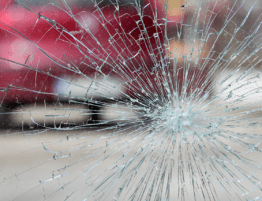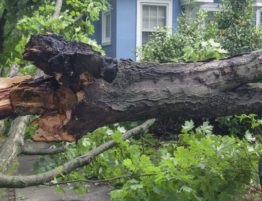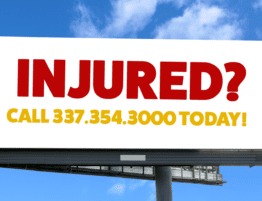
- A hit-and-run is any type of accident where the driver has intentionally left the scene without providing information to the other party.
- When you are involved in a hit-and-run accident, don’t ever try to catch the other driver yourself. Instead, call the police as soon as possible and file an accident report.
- Do your best to take down the make, model and color of the other vehicle, license plate number and anything about the driver’s appearance that may aid police.
- Be sure to get the names and contact information from any witnesses who were present when the accident occurred as their information can help the insurance company make more accurate decisions about your claim.
- Using uninsured motorist property damage coverage to pay for hit-and-run damage is not allowed in Louisiana. However, additional auto insurance coverage options, such as personal injury protection, collision coverage or medical payments coverage, may still cover injuries and car damage in the event of a hit-and-run.
Being involved in a car accident can be a difficult situation on its own. However, an accident coupled with complex circumstances, such as a hit-and-run, can leave you wondering how you’ll ever get the compensation you deserve.
While it may seem like facing impossible odds, take solace in knowing that legal help is available to deal with any accident—whether or not the other driver leaves the scene.
What’s a Hit-and-Run?
Like the name implies, a hit-and-run is any type of accident where the driver has intentionally left the scene without providing information to the other party. This includes car accidents where the other party speeds off, as well as drivers fleeing after striking a parked vehicle. Hit-and-runs are always tricky, so here’s our advice for properly navigating the situation.
First Steps After a Hit-and-Run
It’s understandable to be overcome with stress and anxiety from an accident, but don’t let that deter you from dealing with the hit-and-run itself. The faster you take charge of the situation, the better your results will be.
First, gather as much information about the hit-and-run as possible. Do your best to take down the make, model and color of the other vehicle, license plate number and anything about the driver’s appearance that may aid police. This information can be hard to obtain in the heat of the moment, so make sure witnesses share their statements with police to ensure all information is presented.
Witness information can also help the insurance company make more accurate decisions about your claim, which can help get the compensation you deserve. Be sure to get the names and contact information from any witnesses who were present when the accident occurred.
What to Do Before Leaving the Scene
There are a few important things to do before leaving the scene of the accident:
- Write down the time and the EXACT location of the accident
- Take pictures of the scene of the accident, if possible
- Take pictures of your vehicle (it can be especially helpful if there is visible paint from the other car on it)
Still attempt to get as much information as possible, even if the hit-and-run took place while you were away from your parked car, and try to find out if there were any witnesses present at the time of the incident.
Filing the Police Report
When you are involved in a hit-and-run accident, don’t ever try to catch the other driver yourself—even though it may be your initial thought. Anger can cause reckless driving and potentially create another accident, which may be more serious than before.
Call the police as soon as possible and file an accident report. The report should include the names of any witnesses that you have spoken to and all of the details regarding the accident.
Keep in mind that police may not find the driver that caused the accident. However, having a police report filed can provide you with official documents that can come in handy later on—even if they don’t find the other driver.
Will Car Insurance Cover Damages?
There are times when uninsured motorist bodily injury coverage will pay for all medical expenses during a hit-and-run, and uninsured motorist property damage will take care of the repairs. Some states even require all drivers to have this type of coverage.
However, using uninsured motorist property damage coverage to pay for hit-and-run damage is not allowed in Louisiana. Additional auto insurance coverage options, such as personal injury protection, collision coverage or medical payments coverage, will cover injuries and car damage in the event of a hit-and-run.
Filing the Hit-and-Run Claim
If you can identify the other party, it is possible to file a claim with their insurance company. If they weren’t insured, you can attempt to get your compensation by working with an attorney specializing in these situations.
It’s difficult to identify the party responsible in many instances, so you’ll typically need to file a claim with your insurance company—but it can still be beneficial to work with an attorney for the results you deserve.
When you are involved in a hit-and-run accident, don’t leave the scene—especially to look for the other driver. Try not to block traffic while waiting for police to arrive and don’t wait in your car if it is in the line of traffic.
There are several reasons why the other party would leave the scene of an accident. They may be uninsured or could even be in trouble with the law and be avoiding apprehension. The best preparation is making sure you have the right insurance coverage and learning about your rights to protect yourself in the event of any accident, whether the other party stays or flees the scene. Above all else, seek expert advice from legal professionals to help you navigate these unfamiliar waters and get the compensation you truly deserve.










